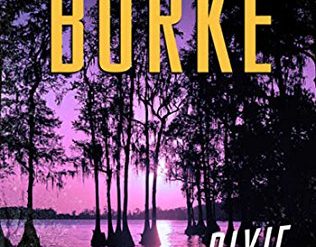
On the globe, Sri Lanka is that small teardrop off the southeast coast of India, and today it’s the source of about one-tenth of the world’s tea. But ninety years ago, as the Depression ravaged the world’s economy, the island was called Ceylon—and it produced about half of all the tea. Then, the British retained a firm grip on the island, and on the tea industry. They owned more than 80 percent of the tea estates. And it is on one such estate in Ceylon’s lush, hilly tea country where a local detective investigates strange doings in this debut of a colonial-era mystery series.
Estimated reading time: 5 minutes
Inspector Shanti de Silva takes a bow
Set in 1932, Harriet Steele’s Trouble in Nuala introduces Ceylonese Inspector Shanti de Silva. He had distinguished himself in an investigation in the capital city, Colombo. His work had led to the conviction of ten members of a Hong Kong-based tong for a series of major crimes. Now reassigned to the sleepy hill town of Nuala, he was looking forward to a restful life with his English wife Jane in their new home. However, as Steele tells us in a prefatory note, “an arrogant plantation owner with a lonely wife, a crusading lawyer, and a death in suspicious circumstances present him with a riddle that he will need all his experience to solve.”
Trouble in Nuala (Inspector de Silva #1) by Harriet Steele (2016) 202 pages ★★★★☆

A slice of British colonial life
Trouble in Nuala is, in most respects, a conventional detective novel. A man dies in suspicious circumstances. The victim, Charles Renshaw, is a Scottish planter who had inherited his failing tea plantation from a distant relative. “Few people had a good word to say for him. . . Allegedly, Renshaw flogged one of his workers, a man called Hari Gooptu.” And those circumstances raise questions in de Silva’s mind when the coroner declares Renshaw’s sudden death to be accidental. De Silva doggedly investigates the case and turns up several likely suspects. However, the one he thinks is most likely turns out to be innocent. Someone he’d first dismissed is—surprise!—the culprit. A conventional story, as I noted.
But the story works better as historical fiction. The characters in Trouble in Nuala give us a glimpse of the social structure in British Ceylon—and of an outpost of the British Empire during the depth of the Depression.
- Inspector Shanti de Silva is a Sinhalese Buddhist. He is probably the descendant of a Portuguese sailor or merchant who’d landed on the island 400 years earlier.
- De Silva’s wife, Jane de Silva had come to Ceylon as governess in the home of a highly placed British official. She follows the Church of England.
- The inspector’s staff, Sergeant Prasanna and Constable Nadar, both live in the poorer quarters to which local people are limited.
- De Silva’s boss, the assistant government agent, is Archie Clutterbuck. He’s an older man whose own boss travels throughout the region, leaving him in charge. A self-important colonial official who trusts in his superiority to everyone native-born.
- Add in assorted cooks, drivers, farmhands, and other lower-class workers, and you’ve got a fair picture of caste and class on Ceylon in 1932.
The setting for the novel
Although it logically “belongs” to the subcontinent, Sri Lanka (known until 1948 as Ceylon) was never part of the British Raj. It was, instead, a British Crown colony until its independence in 1948, a year after India’s. Today, with a population of 22 million, Sri Lanka may spring to mind for three things:
- for its tea
- for the long-running civil war (1983-2009) that produced the Tamil Tigers
- and for the port and military base China is building on its coast as part of its Belt and Road Initiative.
According to a scholar cited in Wikipedia, “Sri Lanka’s documented history goes back 3,000 years, with evidence of prehistoric human settlements that dates back 125,000 years.” Today, two ethnic groups dominate the island’s population: the Hindu Tamil-speakers in the north and east (originally migrants from India) and the Buddhist Sinhalese who populate the rest of the island.
Tamil is the dominant language on India’s southeast coast. There it is spoken by more than 70 million people (compared to only three million in Sri Lanka). But the Sinhalese language is indigenous to the people of Sri Lanka, and the government is predominantly Sinhalese-speaking. In fact, 75 percent of the population speak it. The two groups have long been at odds over the sometimes-brutal repression of Tamil speakers by the majority population. The nation’s civil war is only the latest manifestation of conflict between them.
About the author

On the biographical blurb for Google Books she obviously prepared herself, Harriet Steele writes that she “grew up in London and Wiltshire but now lives in Surrey [not far from London]. Married with two daughters, she has worked in fields from law to libraries. Her interests are travel, history and art, all of which have inspired the four historical novels she wrote before turning to crime with The Inspector de Silva Mysteries [of which there are now five books]. She reads widely, but in the mystery genre is particularly fond of vintage mysteries.” It shows.
For related reading
For similar good books, see The best Indian detective novels and Top 10 historical mysteries and thrillers.
You might also enjoy my posts:
- Good books about India, past and present
- Top 10 mystery and thriller series
- 20 excellent standalone mysteries and thrillers
- 30 outstanding detective series from around the world
- Top 20 suspenseful detective novels
And you can always find my most popular reviews, and the most recent ones, on the Home Page.


























